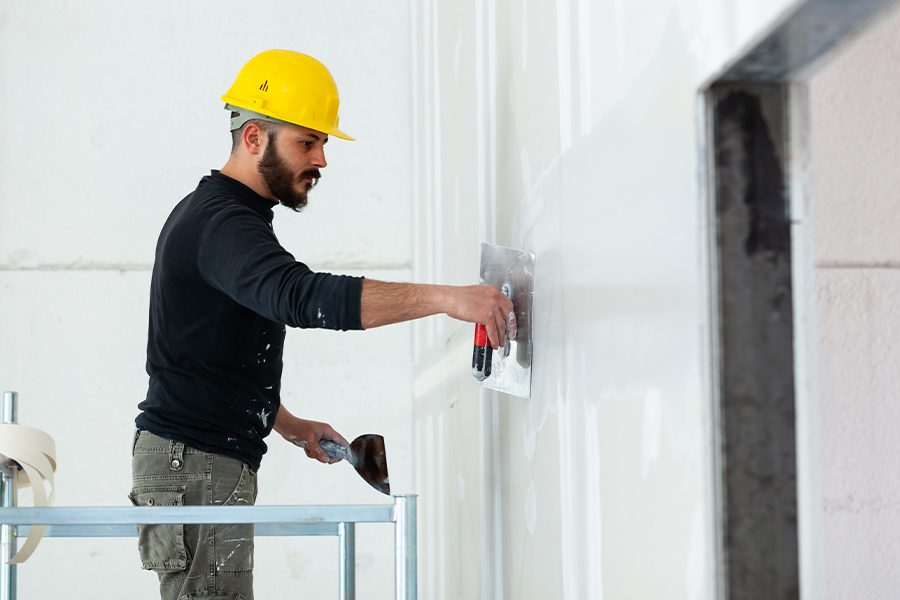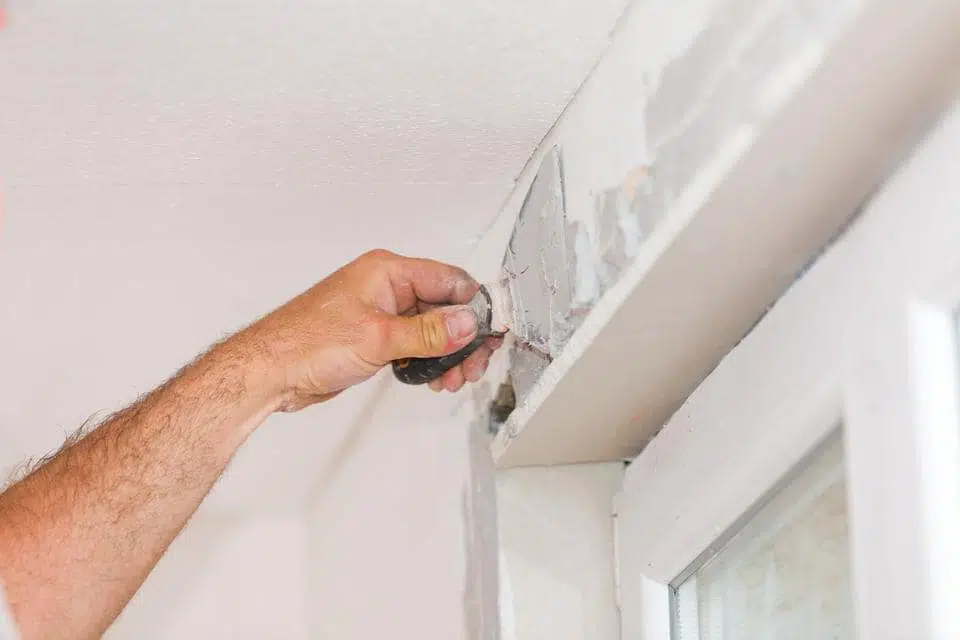Specialist Drywall Contractor Services for Your Home Restoration
Specialist Drywall Contractor Services for Your Home Restoration
Blog Article
Drywall Installation Facilitated: Tips for Perfect Results
Drywall setup is often perceived as an overwhelming job, yet with the best method and knowledge, it can become a convenient undertaking. Choosing high quality materials and preparing the installment location are important primary steps that establish the foundation for success. Additionally, mastering strategies for cutting, hanging, and finishing drywall can dramatically affect the outcome. As we check out these important pointers, you might find that also the smallest changes in your method can lead to incredibly improved outcomes, leaving you to consider exactly how these practices can change your next job.
Picking the Right Materials
Choosing the ideal materials for drywall setup is crucial to accomplishing a sturdy and aesthetically pleasing surface. drywall repair. The primary component, drywall sheets, commonly been available in different densities, with 1/2-inch sheets being conventional for indoor wall surfaces. For areas needing extra dampness resistance, such as bathrooms or kitchen areas, consider using eco-friendly board or cement board, which are specifically made to withstand humidity

Additionally, picking the ideal fasteners-- either nails or screws-- is important for protecting the drywall to the framing. Drywall screws are typically favored for their holding power and decreased risk of popping. Lastly, consider the complements such as guide and paint, which not only enhance the appearance yet additionally secure the drywall from wetness and wear.
Preparing the Installation Location
Before starting the drywall installation procedure, it is important to prepare the installment area completely. A tidy office decreases the danger of damages to existing items and enables for reliable movement throughout installment.
Next, check the wall surfaces and ceiling for any type of imperfections, such as splits, holes, or mold. Address these concerns beforehand; patch any type of problems and allow adequate time for fixings to completely dry. Additionally, make sure that electric outlets, switches, and plumbing are appropriately placed and accounted for, as this will affect drywall positioning.
Take into consideration the ecological problems too. A stable temperature level and humidity level are essential for optimum adhesion and performance of the drywall materials. Make use of a dehumidifier or heater to develop ideal problems. if essential.
Trimming and Hanging Drywall
The secret to efficient drywall installment exists in the specific cutting and dangling of the panels. Utilize a straight edge and an energy knife to rack up the drywall along your dimensions, then break it along the racked up line for a clean break.

Always work from the top down and delegated right, guaranteeing that you keep a staggered pattern to boost stability. Effectively hanging the drywall sets the structure for a smooth finish, eventually leading to remarkable lead to your drywall job.
Insulation and Mudding Strategies
While appropriate cutting and dangling of drywall establishes the stage, the next critical step includes grasping taping and mudding strategies to ensure a seamless coating. Insulation is vital for reinforcing joints and preventing splits; it includes installing tape into the used joint substance (mud) Start with a quality fiberglass or paper tape, using the tape over the joint and pushing it into the damp mud using a taping blade, making sure no air bubbles remain.
When the tape is in location, use a thin layer of joint substance over the tape, feathering the edges to produce a smooth shift to the drywall surface. Enable this layer to completely dry entirely prior to sanding it gently to get rid of blemishes. Repeat this procedure, using added layers of mud as essential-- generally 2 to 3 coats-- while slowly broadening the application area with each layer to accomplish a seamless look.
After the final coat dries out, sand the surface area with a fine-grit sandpaper till smooth. drywall repair. Keep in mind to use a mask during sanding to avoid breathing in dirt bits. Grasping these taping and mudding methods is vital for accomplishing a professional-quality finish in your drywall installation
Ending Up Touches for Excellence
Accomplishing a perfect drywall installation Check Out Your URL surpasses mudding and taping; it finishes in the completing touches that raise the overall look. These last steps are crucial in ensuring a professional-grade coating that improves the aesthetic appeals of your area.
Begin by sanding the dried site out joint substance to create a smooth surface area. Use a fine-grit sandpaper and a fining sand block or post sander for optimal control. Pay certain interest to edges and edges, as these areas tend to call for more thorough work. After fining sand, wipe down the walls with a moist cloth to get rid of any dirt bits, ensuring a clean surface area for painting.
Following, apply a guide especially developed for drywall. This action is important, as it aids seal the joint compound and offers a consistent base for the overcoat. Once the primer dries, evaluate for any kind of flaws, and repair as needed.
Final Thought
In verdict, successful drywall setup depends upon the careful choice of products, comprehensive preparation of the installment location, and precise execution of reducing and hanging strategies. Mastery of taping and mudding processes is vital for attaining a smooth finish. Additionally, interest to ending up touches, consisting of priming and touch-ups, ensures a professional-grade result. By adhering to these guidelines, the high quality of handiwork can be significantly enhanced, adding to the general visual and capability of the room.
Drywall installation is frequently perceived as a difficult task, yet with the best method and understanding, it can become a manageable endeavor.Picking the ideal products for drywall setup is important to accomplishing a resilient and aesthetically pleasing coating.Prior to beginning the drywall installation process, it is crucial to prepare the installment area thoroughly. Mastering these taping and redirected here mudding strategies is important for accomplishing a professional-quality finish in your drywall installment.
In final thought, successful drywall installation pivots on the cautious selection of products, extensive preparation of the installment area, and precise implementation of cutting and hanging strategies.
Report this page